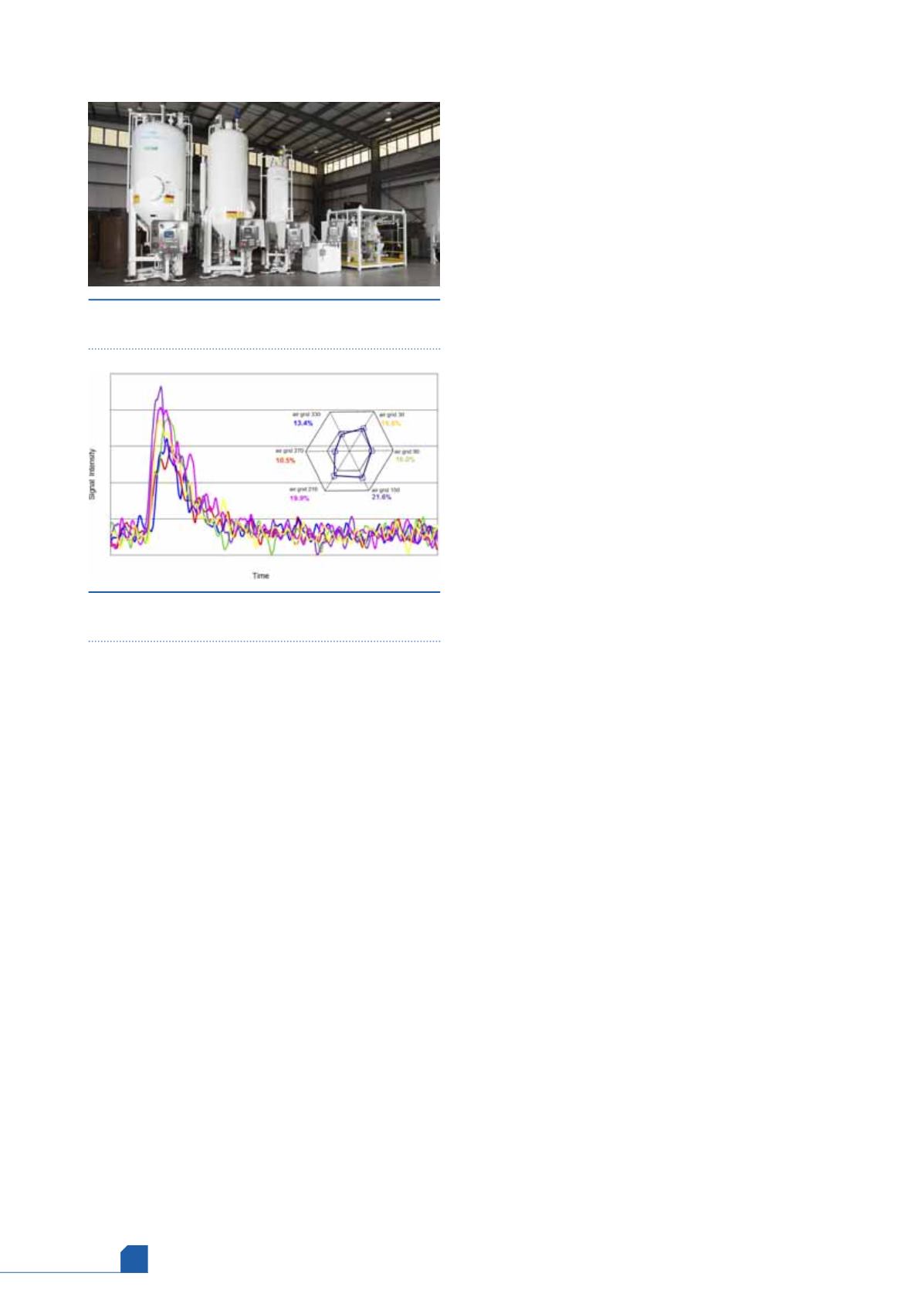
March
2017
HYDROCARBON
ENGINEERING
48
effective and flexible strategy for rapidly changing the
catalytic properties in the circulating inventory.
Maximising gasoline requires a high level of rare earth
exchanged ultrastablised Y-zeolite (RE-USY) in the FCC
catalyst. The RE-USY zeolite has a micropore structure,
into which the largest molecules that can enter are in the
middle distillate boiling range (carbon number up to
approximately C
20
, boiling range up to about
350°C/660°F). These are then cracked to smaller
molecules in the gasoline (C
5
– 221°C/430°F) and LPG
(C
3
+ C
4
) range. To switch from an optimised distillate
mode to an optimised gasoline mode requires the
catalyst RE-USY content of the inventory to be increased.
This can be achieved by changing the catalyst
composition, or more rapidly by using a catalytic additive
(e.g. Hi-Y) with very high RE-USY content to increase the
zeolite to matrix ratio of the circulating inventory.
Distillate mode is somewhat the opposite to
gasoline mode; lower severity operation is required that
leads to increased heavy cycle oil (HCO) and bottoms
make. Additionally, as described above, RE-USY will
convert the desired middle distillate product to
gasoline, so catalyst reformulation is required to
address these two issues. The RE-USY zeolite content of
the circulating inventory should be decreased to avoid
excessive cracking of the desired middle distillate
product. HCO and bottoms are large molecules with
boiling range >350°C/660°F and their conversion is best
achieved using mesoporous alumina (matrix). So, an
optimum catalyst will have a low zeolite and high
matrix alumina content, often characterised in terms of
low zeolite to matrix surface area ratio (i.e. low Z/M).
Once again, catalyst change-out will take several
months, resulting in missed opportunity. A more flexible
and rapid response is to back off catalyst make-up rate,
thereby decreasing replacement of fresh RE-USY, and
use a catalytic bottoms cracking additive (e.g. BCA-105)
with high matrix surface area. Importantly, the BCA
should not contain RE-USY because this would have the
unwanted effect of cracking desired distillate product
to gasoline and LPG.
Light olefins are valuable either as petrochemical
feedstocks (e.g. propylene) or for upgrading into high
octane gasoline blending components (e.g. alkylates and
ethers). To maximise light olefins it is necessary to
operate the FCC at high severity to maximise
conversion. The catalyst needs to be reformulated to
ensure heavy feed molecules are cracked through the
distillate and gasoline boiling ranges all the way to
propylene and butylenes. To do this, a careful balance
of matrix and zeolite contributions is required,
depending on the feed properties (lighter vacuum gas
oil [VGO] feeds requiring higher zeolite content, while
heavier residue feeds require higher matrix content).
Furthermore, for maximum light olefin selectivity,
excessive hydrogen transfer reactions should be
avoided, so excessive amounts of RE-USY should be
avoided, and ideally the RE content of the RE-USY
should also be decreased. However, light olefin
maximisation is best achieved using ZSM-5, a zeolite
with smaller micropores than those in RE-USY. Additives
containing zeolite ZSM-5 have unparalleled
performance for boosting light olefin selectivity in the
FCC. ZSM-5 zeolite acts as a molecular sieve, selectively
admitting gasoline range molecules into the ZSM-5
microstructure where they are cracked to propylene
and mixed butylenes. Some gasoline yield is lost in the
production of LPG olefins, but the octane of the
remaining gasoline is improved.
While additives can enhance the flexibility of FCC
operation between cycles of catalyst inventory,
dedicated additive injection systems enable a high
degree of operating flexibility to the refiner by
accurately and reliably allowing these various additives
to be used when required. These additive injection
systems (Figure 1) offer the operator flexibility to
introduce whatever dosage is necessary to meet the
optimum economic case, as well as the performance
requirements in that catalyst inventory cycle.
Sometimes there are changes in unit efficiency
where there is no clear indication of the cause. That is
when additional tools are needed to gather more
information about the unit performance. Radioisotope
technology is a powerful tool that plant personnel can
use to gain greater understanding of their FCC. Figure 2
is one example of this, where the FCC regenerator is
monitored using radioisotope technology to potentially
help operations optimise unit production or determine
if mechanical failure is the root cause of the air
maldistribution.
Figure 1.
Johnson Matthey's INTERCAT
JM
additive and
catalyst injection systems.
Figure 2.
Online diagnostics detecting FCC
combustion air distribution.








